|
Artistic depiction categorizes all my art related work that does not fit any category. This category includes my non-photo-realistic rendering (NPR) related works such as 3D Chinese painting, implicit painting, cubist rendering or video screening. However, I do not call this subcategory as non-photo-realistic rendering since it also includes finding new conceptual sculptural forms such as 3D caricatures. Under this category, there are a wide variety of topics such as inverted perspective, interactive pictorial maps and caricaturing buildings and particularly my new research direction: Visual Storytelling. All the papers can be downloaded from my webpage.
PEER REVIEWED PAPERS
Chinese Painting
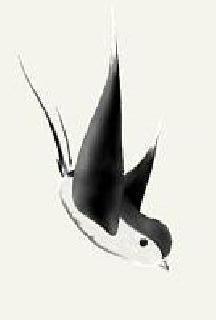
|
C. Chan, E. Akleman and J. Chen, "Two Methods for Creating Chinese Painting", Proceedings of Pacific Graphics'02, Beijing, P. R. China, Oct. 2002.
(Paper)
(Talk)
Description: We present two methods to create realistic Chinese
painting. The first method is to
create 3D Chinese painting animation
using existing software packages.
The second method is an expressive paint tool which allows
an artist to interactively create 2D Chinese painting.
|
Implicit painting
See Images
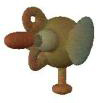
|
E. Akleman, "Implicit Surface Painting", Proceedings of Implicit Surfaces'98, Seattle, pp. 63-68, June 98.
(Paper)
Description: Implicit surface painting is an artistic method I developed for rendering implicitly represented scenes via particle trajectories. The particles are driven by time variant difference equations which I call implicit painting equations. The implicit painting equations force the particles to move on implicitly represented three-dimensional surfaces.
|
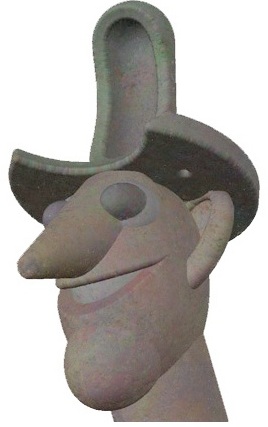
|
E. Akleman, "Implicit Painting of CSG Solids", Proceedings of CSG'98, Bath, United Kingdom, pp. 99-113, April 1998.
(Paper)
Description: In this paper, I paint surfaces defined by exact set operations. I view the motion of these particles as the motion of the hands of several painters. I also view the trajectories of the particles as long unbroken brush strokes, and the implicitly represented surfaces in a scene as the canvases of the painters.
|
Artistic Dithering
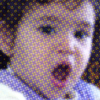
|
J. Yu and E. Akleman, Video Screening, Bridges: Mathematical Connections in Art, Music, and Science 2004, Banf, Alberta, Canada, August 2005.
(Paper)
Description: This paper presents video screening, a new concept for
the creation of aesthetic images. We have developed a variety of
techniques to create video screening images and animations. Using
these techniques we have created a variety of video screening
animations. These techniques allows us to create artistic looking
images easily and provide frame to frame coherence,
spatial and temporal anti-aliasing in animations.
|
Cubist Rendering with Multi Camera
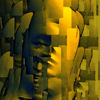
|
J. Smith, E. Akleman, D. Davision and J. Keyser, MultiCam: A System for Interactive Rendering of Abstract Digital Images, Bridges: Mathematical Connections in Art, Music, and Science 2004, Winfield, Kansas, August 2004.
(Paper)
Description: In this paper, we present an artist's tool, MultiCam, to
design abstract paintings with a simple, interactive and intuitive
rendering technique. This interactive rendering system is inspired
by multiple view ray-tracing techniques that is based on the
cubist principle of multiple views and collage.
|
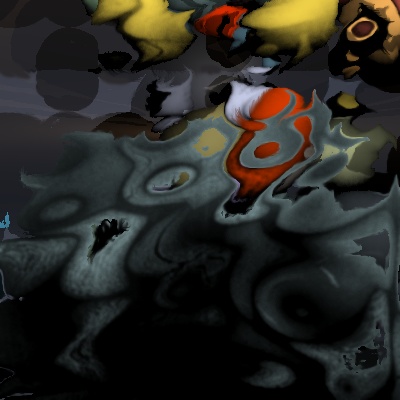
|
S. Meadows, E. Akleman, "Abstract Digital Paintings created with Painting Camera Technique", Proceedings of D'ART 2000 / Information Visualization 2000, London, United Kingdom, July 2000.
(Paper)
Description: We present a simple
and intuitive rendering technique
to create abstract paintings using camera-control-images.
For the creation of abstract paintings, we have developed
two artistic techniques. In the first technique, artists
incrementally paint a complicated camera-control-image
for a given 3D scene. In the second technique,
for a given camera-control-image
artists incrementally
built a 3D scene to create an interesting abstract painting.
The second technique is particularly helpful when using existing images
such as photographs and paintings as camera-control-images.
Multi-camera Images & Talks
|
Non-traditional Persepective
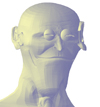
|
V. Srinivasan , O. Ozener and E. Akleman, Inverted Perspective for Architectural Visualization, CAAD FUTURES 2005, Vien, Austria, June 2005.
(Paper)
Description: Widely used by Russian Icon painters, inverse perspective is an illusion of depth perception characterized by inversion of the depth cues in the scene. Distant parts are shown larger and nearer parts looks smaller. In this paper, we introduced a simple method to interactively view objects in inverted perspective.
|
Tiles
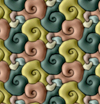
|
E. Akleman, J. Chen, B. Meric, "Web-Based Intuitive and Effective Design of Symmetric Tiles", First International Workshop Bridging the Gap: Bringing Together New Media Artists and Multimedia Technologists Conjuction with with ACM Multimedia 2000, Los Angelos, California, pp. 1-4, November 2000.
(Paper)
Description: This paper presents a new approach
for intuitive and effective design of periodic symmetric tiles.
We observe that planar graphs can effectively represent
symmetric tiles and graph drawing provides an intuitive
paradigm for designing symmetric tiles. We are able to present
all symmetric tiles as graphs
embedded on a torus and based on simple modulo operations.
This approach enables us to develop a simple and efficient
algorithm, which has been implemented in Java.
Java Program
|
Caricature
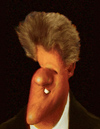
|
E. Akleman, J, Palmer, R. Logan, "Making Extreme Caricatures with a New Interactive 2D Deformation Technique with Simplicial Complexes", Proceedings of Visual 2000, pp. Mexico City, Mexico, pp. 165-170,September 2000.
(Paper)
Description: We present a new interactive 2D deformation technique
to make caricatures with extreme exaggerations.
In our technique, we use simplices as deformation primitives.
We also provide
a set of blending functions to effectively interpolate these
translation vectors from each simplex primitive to compute
a combined translation. These combined translation vector are
used to transform each vertex of a texture mapped grid.
Deformation of the grid provide interactive deformation
of the texture that is mapped to the grid.
|
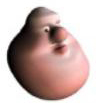
|
S. Skaria, E. Akleman, F. Parke, "Modeling Subdivision Control Meshes for Creating Cartoon Faces", Proceedings of Shape Modeling 2001, Genova, Italy, pp. 216-227, May 2001.
(Paper)
Description: Modeling three-dimensional faces on the computer has been
an interesting yet challenging problem.
This paper presents a method for creating cartoon faces
by using a subdivision scheme.
We use set-operations
for conceptual design of subdivision control meshes.
to sculpt the control mesh. Using
this interface we have been able to create a
variety of cartoon faces.
|
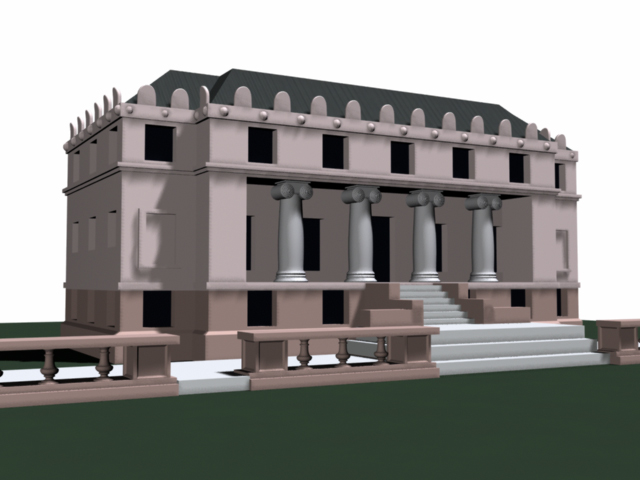
|
G. G. Rice III, E. Akleman and O. Ozener, "Caricaturing Buldings for Effective Visualization of Existing Built Structures", Education and Research in Computer Aided Architectural Design in Europe: EcaadE'04, Copenhagen, Denmark, September 2004.
Paper
Description: We present an expressive modeling approach based on
techniques of caricature and cartoon art. This approach can be
used by virtual designers to recreate simplified computer
generated models of existing buildings using available 3D modeling
software. It can also help to limit modeling time and helps to
easily reconstruct recognizable landmark buildings for pictorial
maps of college campuses, cities, and regions. Such pictorial maps
can be very helpful in route finding, travel planning and public
presentations.
|
PEER REVIEWED SKETCHES
Caricature
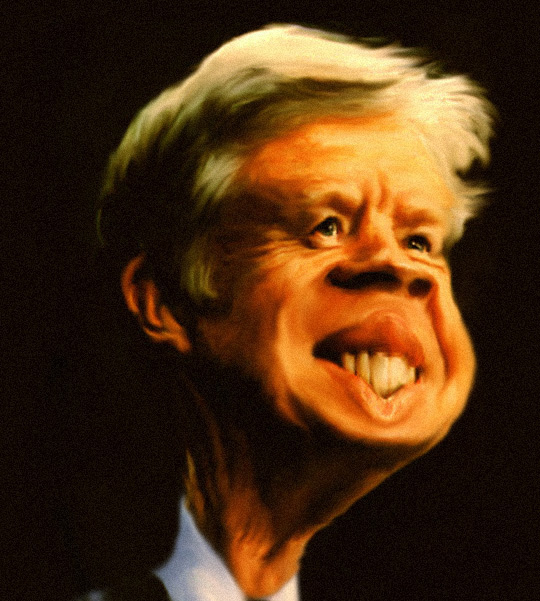
|
E. Akleman, "Making Caricatures with Morphing", Visual Proceedings of ACM SIGGRAPH'97 (Siggraph Sketch), Los Angeles, California, pp. 134, August 1997.
(Sketch)
(Talk)
Index with Caricatures
Description: The talent of a caricaturist is important when using traditional media such as pencil and paper. Since, traditional media are not interactive, caricaturists must complete the caricatures in their minds before starting to draw. Since this ability does not exist in most people, it has always been considered some sort of magical talent of a gifted few.
I have noticed that when using an interactive morphing tool, there is no need to have the special talent of a caricaturist. Based on my experience as a professional caricaturist, I have developed a procedure to make caricatures from photographs by using morphing tools.
|
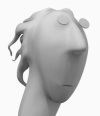
|
E. Akleman, "Modeling Expressive 3D Faces", Visual Proceedings of ACM SIGGRAPH'2004 (Siggraph Sketch), Los Angeles, California, July 2004.
(Sketch)
Description: The concepts of abstraction, simplification and exaggeration,
which are very common in traditional art and caricature, can
directly be applied to the 3D modeling process. Therefore, the
development of methods to teach these concepts is essential for 3D
computer art and design education. We present an
educational method to teach students these artistic concepts by
modeling expressive 3D caricatures.
|
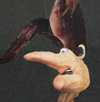
|
E. Akleman, Automatic Creation of Expressive Caricatures: A Grand Challenge For Computer Graphics, Computational Aesthetics in Graphics, Visualization and Imaging, Girona, Spain, May 2005.
(Paper)
Description: In this short article I claim that Automatic creation of very extreme caricatures is a grand challenge or Turing test. Unless
we develop a community that realize the difficulty of the problem,
it will be hard to progress and it will even be harder to measure
the progress. To measure the progress, we have to be very careful about people's
tolerance which is so high that it is easy to make people accept
unsuccessful caricatures as successful ones. There are several
tricks of trade, we need to be careful to avoid.
|
TECHNICAL REPORTS (NOT PEER REVIEWED)
Caricature
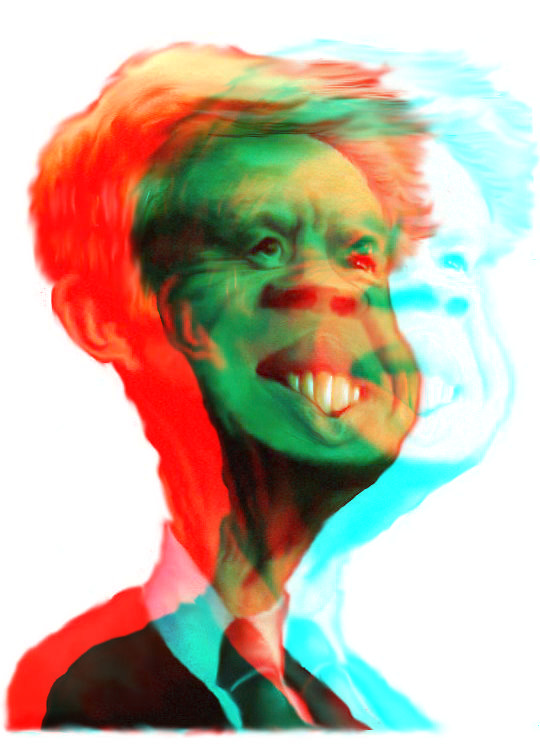
|
E. Akleman, "Stereo Caricatures", Technical report
(Extended Abstract)
Description: Stereo image generation has a fascinated artists for most of this century. For instance, photographers have been creating stereo images nearly a hundred years, and anaglyph (red & blue/green) stereo comics have been popular on and off again in the same period of time. With the recent development of computer graphics, stereo images of 3D scenes has gained popularity among digital artists. However, despite the interest in stereo techniques hand-painted stereo images are not common. This is just an artistic work that shows how to create stereo painting by hand. The method is very intuitive and because of imperfections of hand-drawn pictures the results looks expressive in stereo. Unfortunately, I did not have time to try a wider variety of painting styles.
|
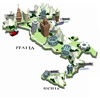
|
Asma Naz, Ergun Akleman & Treye Rice, Interactive Pictorial Maps.
(Extended Abstract)
Description: Pictorial maps are printed maps that provide
expressive 3D depictions of cities, states
and countries.
In this work, we present Interactive
Pictorial Maps (IPMs) that are exaggerated and simplified 3D representations
of countries, regions, cities or neighborhoods. These interactive
maps are created
by using modeling software and therefore can easily be updated.
They can be interactively viewed on the Internet by exporting the files in
a format that is suitable for 3D web viewing software such as VRML
or Macromedia Shockwave.
For Interactive Demos See IPM
|
Expressive Sculpting
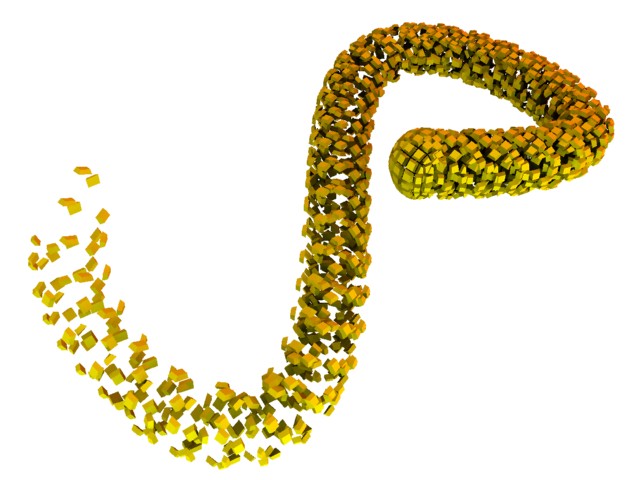
|
Piotrek Krawczyk & E. Akleman, "Futuristic Modeling", Technical Report 2005.
(Extended Abstract)
Description: We present an
innovative approach that enables modeling a static
three-dimensional representation of time and motion. We named it
Futuristic Modeling, to honor the fact that its concept originated
from interpretation of Futurist paintings, emphasizing dynamism,
energy and speed.
|
Expressive Depictions in Engineering

|
C. Evrenosoglu, X. Bei, E. Akleman and A. Abur, 3D Abstract Depiction of Electrical Circuits, January 2004.
(Report)
Description: In this paper, we extend traditional 2D electrical circuit
drawings to 3D abstract depictions. Since our 3D depictions
strongly resemble traditional circuit drawings, classically
trained engineers easily adopt to our depictions. These 3D
depictions are especially useful for the people outside of
engineering community. Although the abstract nature of traditional
drawings still exists in these 3D depictions, our depictions look
more familiar and tangible due to their 3D structure.
See Interactive Model
ReadMe file to use interactive system
|
Implicit Painting
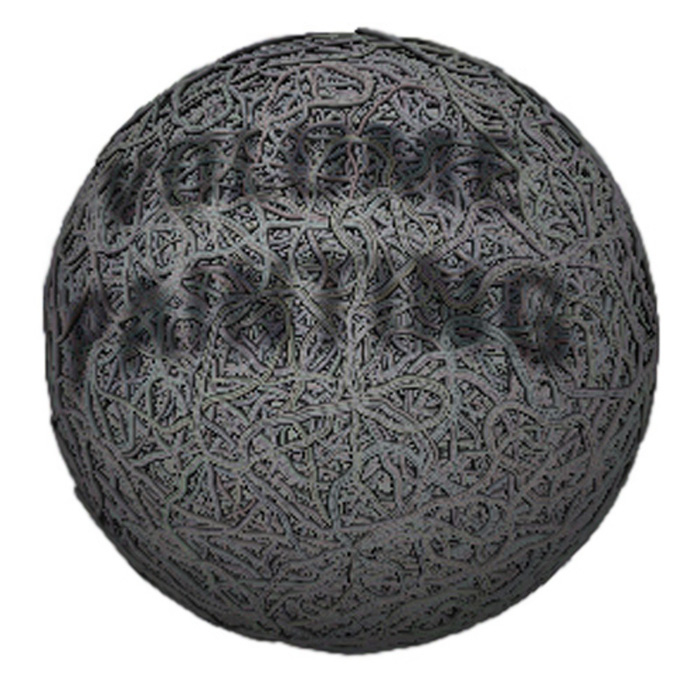
|
E. Akleman, "Volume Painting", Technical Report, January 1998.
(Report)
Description: In this work, I paint volumes. Brush colors can change based on texture date. I obtain various painting effects for the same volume by changing the coefficients of the equations and by attaching different brush objects to the particle trajectories. Using this method, it is possible to create a worn & torn effect. It is also possible to create some unexpected puzzle like images.
See Volume Painting Images
|
HDR for art

|
B. Clark and E. Akleman, "Time Lapse HDR", Technical Report, 2006.
(Report)
Description: We present an approach to a pipeline for time lapse
photography using conventional digital images converted to HDR
(High Dynamic Range) images (rather than conventional digital or
film exposures). Using this method, it is possible to capture a
greater level of detail and a different look than one would get
from a conventional time lapse image sequence. With HDR images
properly tone-mapped for display on standard devices, information
in shadows and hot spots is not lost, and certain details are
enhanced.
|
Visual Storytelling
This is a new research direction for me.
None of these reports are complete.
I think that Visual storytelling is an area that is widely neglected by
researchers. One can find a wide variety of literature on telling or
writing stories in any library; but we do not see such a variety in
visual storytelling. The practitioners such as cartoonists, comic
book artists and storyboard artists learn the tools of the trade
from each other or from existing works.
As a cartoonist, I think that comics and cartoons provides a strong model to start
storytelling process visually. It is important to identify and formalize the
experience and discoveries of cartoonists and comic book artists;
and to disseminate these findings. I also think that caricature is also a part of visual storytelling since it encapsulate several artistic concepts such as exaggeration, abstraction and simplification, which are essential for
visual storytelling.
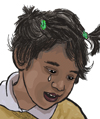
|
E. Akleman and H. Celik, "On the Importance of the Droplet Position and Orientation
for Effective Visual Storytelling", Technical Report, 2006.
(Report)
Description: In this work, we illustrate that even a simple prop such
as a simple water droplet is important for effective storytelling.
Using examples, we show that a small change in the positions and
orientations of the props can change our perception of a character's
facial expression and personality.
|
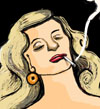
|
E. Akleman and N. Rigel, "Impact of Smoking
in Visual Archetype Design", Technical Report, 2006.
(Report)
Description: There are many contributing factors in successful archetype design
such as proportions, poses and postures, actions, facial
expressions. If any one of them includes a flaw the reader cannot
perceive the intended character and the story is weakened. In this
paper, we show that even a simple prop such as smoking can be
important for designing successful visual archetype.
|

|
Y. Liu, E. Akleman and J. Chen, "Visual Storytelling Warehouse", Technical Report, 2006.
(Report)
Description: We introduce the concept of Visual Storytelling
Warehouse, an interactive XML-based automatic cartoon-style visual
storytelling system to generate new stories based on written story
structures and user's requirements. The Warehouse will consist of
the visual and no-visual elements including characters, events,
background images, and story plots. Each of these elements will be
associated with some semantic meanings that can be easily
interpreted for constructing stories by Visual Storytelling
Warehouse.
|
|























